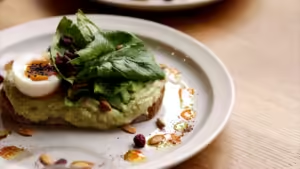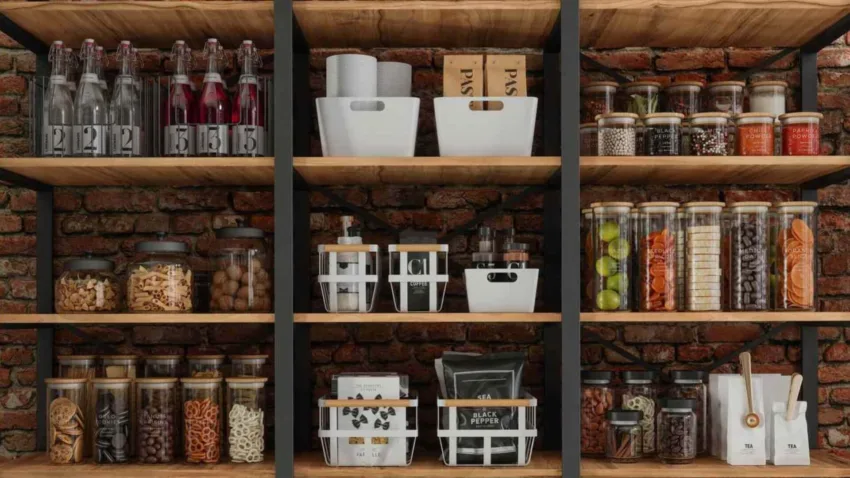Especially for those following vegan, vegetarian, or gluten-free diets, keeping an organized pantry is essential to maintaining a sustainable and healthful way of life in modern society. A well-organized pantry not only simplifies daily tasks but also reduces wasteful spending and encourages responsible consumption. We’ll dive into practical tactics and insights in this extensive guide to maximize storage capacity, reduce waste, and precisely address dietary requirements.
Typical Pantry Organizing Difficulties
What are some typical obstacles that people run into when they organize their pantry?
A: A common issue is a lack of space, particularly in smaller kitchens or apartments. Other issues include the inability to maintain inventory records, items that have expired or been forgotten, and disorganized storage that results in inefficient use of available space.
Solutions:
Maximize Vertical Space: Make use of the space above your head by mounting shelves or racks on the walls or pantry doors. This frees up valuable shelf space by enabling the storage of additional spices, canned goods, and smaller items.
Categorize Items: To make specific areas in your pantry, put similar items together. Set aside areas for things like grains, legumes, canned goods, baking supplies, condiments, and snacks. This avoids crowding and makes finding items easier.
Invest in Clear Containers: To keep dry goods fresh and visible, transfer them into clear, airtight containers such as rice, pasta, flour, and nuts. This optimizes shelf area while minimizing packaging waste and making inventory management simple.
Rotate Stock: Make sure older items are used before newer ones by using the “first in, first out” (FIFO) method. To avoid food waste, place items with older expiration dates in front and those with newer dates at the back.
Label everything: Put labels on jars, shelves, and containers to help you quickly determine their contents and expiration dates. Whether it’s handwritten labels, label makers, or chalkboard labels, use a labeling system that suits you.
Meeting Particular Dietary Requirements
How can pantry organization accommodate dietary requirements like gluten-free, vegetarian, and vegan diets?
A: Dieters who are vegan, vegetarian, or gluten-free frequently need particular foods and meal preparations. Preparing the pantry to meet these dietary requirements entails keeping distinct storage spaces, stocking necessary ingredients, and making sure cross-contamination is prevented.
Solutions:
Keep a range of plant-based proteins (tofu, tempeh), canned fruits and vegetables, grains (quinoa, rice), legumes (beans, lentils), and other vegan and vegetarian staples on hand.
Establish Gluten-Free Zones: Set aside particular shelves or sections for goods like pasta, flour, and baking supplies that are free of gluten. To avoid cross-contamination with gluten-containing products, store these things apart.
Indicate Allergens Make it clear: Mark shelves and containers with labels designating products free of gluten and other allergens. For those with dietary restrictions, this guarantees safe food storage and helps avoid unintentional ingestion of allergens.
Five Tips for Efficient Pantry Organization
Regularly Declutter: Take stock of your pantry and get rid of any outdated or unused items. Reduce food waste by composting organic waste or donating non-perishable goods to food banks.
Make Use of Adjustable Shelving: Make an investment in modular storage systems or adjustable shelving that can be made to fit the dimensions of your pantry and hold different sized containers.
Employ Space-Saving Solutions: Make the most of your available space by utilizing space-saving items like tiered organizers, under-shelf baskets, and stackable bins. These solutions maintain objects visible and accessible while optimizing vertical space.
Plan Meals and Inventory: To prevent overspending or buying duplicates, plan your meals in advance and make shopping lists based on your pantry’s contents. This guarantees effective use of pantry space and lessens food waste.
Establish a Cleaning Schedule: To keep your pantry tidy and hygienic, clean and arrange it on a regular basis. To keep your pantry area neat and organized, clean the shelves, vacuum or sweep the floors, and look for pests.
A healthier lifestyle, less waste, and easier meal preparation are all made possible by effective pantry organization. Don’t forget to like and share this post with friends and family who might find these tactics helpful, and feel free to share your own pantry organization advice and experiences in the comments section below. See our previously posts for additional ideas and details on organizing your kitchen and leading a sustainable lifestyle.
Discover the universe of tastes in our “Lovely Voyages” section, a culinary enthusiast’s paradise. Explore the art of cooking by dipping into our carefully chosen cookbooks, which are now easily bought on Amazon. Every page presents a symphony of flavors, and every recipe invites you to create unique culinary experiences. Leap into our collection and turn your cooking attempts into works of art. This is where your journey to delicious dishes begins.
Happy Organizing!!!
- Quick Breakfasts: Energize Your Morning
 Starting your day with a nutritious breakfast can make a significant difference in your energy levels and mood throughout the day. But when mornings are hectic, it’s easy…
Starting your day with a nutritious breakfast can make a significant difference in your energy levels and mood throughout the day. But when mornings are hectic, it’s easy… - Elegant Pastries: Impress with These Beautiful Treat
 There’s something undeniably magical about a beautifully crafted pastry — it’s not just a dessert, but a work of art! Whether you’re hosting a fancy dinner party, treating…
There’s something undeniably magical about a beautifully crafted pastry — it’s not just a dessert, but a work of art! Whether you’re hosting a fancy dinner party, treating… - Organizing Your Spices: Tips for an Efficient Pantry
 Picture this: You’re in the middle of preparing your favorite dish, your kitchen smells divine, and everything’s going perfectly—until you realize you can’t find the cumin. Frustration kicks…
Picture this: You’re in the middle of preparing your favorite dish, your kitchen smells divine, and everything’s going perfectly—until you realize you can’t find the cumin. Frustration kicks…
